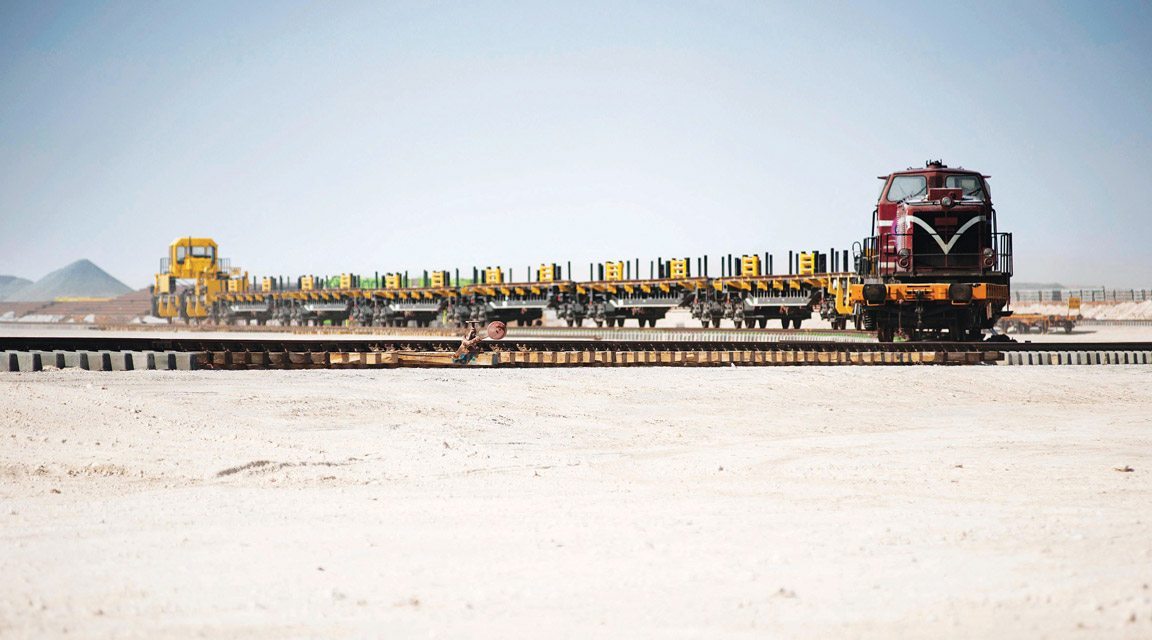

Uncertainty over projects second phase could have triggered drastic move
Etihad Rail has retrenched most of its expatriate workforce, sources familiar with the companys operations told MEED on 17 January.
A local media report further said the retrenched individuals are equivalent to 30 per cent of the firms workforce.
The retrenchment notices were understood to have been handed out to the concerned employees starting on the second week of January.
In a statement sent to MEED, an Etihad Rail spokesperson acknowledged that they have introduced a restructuring initiative across the company to further streamline our operations as well as our internal procedures and processes.
These changes involve a number of staffing adjustments, as we move towards a flatter management structure, and encourage greater adoption of shared resources and more efficient ways of working, the statement added.
About 40 per cent of Etihad Rails estimated 130 employees are Emiratis.
It is understood the uncertainty facing the second phase of the Etihad Rail project could have contributed to the restructuring initiative. It is thought, but not confirmed by Etihad Rail, that the budget for phase 2 has either not been included in Abu Dhabis 2016 budget or was included in the proposed budget but has not yet been approved by the Abu Dhabi Executive Council (Adec).
The capitals 2016 budget has not yet been released publicly.
Contracting groups submitted technical bids for the second phase of the UAEs national rail network in September 2015
The second phase of the project, which will connect Abu Dhabi with the Saudi border and Dubai, has been tendered before, with bids submitted in November 2012.
Following prolonged negotiations and a change in the design, including the possibility of dropping a link to Al-Ain that would connect to the Omani rail network, the project was retendered in 2015.
The original scope for phase 2 involves building rail lines in Abu Dhabi emirate between Ghuweifat and Ruwais, a link to Al-Ain, and a line to Jebel Ali in Dubai. It also included a branch line between Mussafah and Industrial City Abu Dhabi.
Two groups had been shortlisted for the phase 2 contracts when they were previously tendered. The two groups were:
- Salini Impregilo (Italy) / Samsung C&T (South Korea) / Tristar (local)
- China Railway Construction Company (China ) / Ghantoot Group (local)
Unlike the first phase, where the financing deal was oversubscribed, with a club deal financing extended by the National Bank of Abu Dhabi (NBAD), Bank of Tokyo-Mitsubishi UFJ (Japan), Abu Dhabi Commercial Bank and HSBC (UK), phase 2 of the project is understood to have failed to attract the same level of enthusiasm from the financing community.
The second phase of the project has many, smaller offtakers that mainly comprise logistics and construction materials companies, unlike in the first phase where the financing was structured around a single offtaker, the Abu Dhabi National Oil Company (Adnoc). Adnoc was to pay Etihad Rail for the delivery of sulphur to Ruwais for export, a feature that helped reassure lenders that the risk will be taken on by Adnoc.
Phase 2 of Etihad Rail comprises a crucial segment of the planned 2,137 kilometre GCC Rail network.
You might also like...

Arada awards $167m Masaar construction contracts
16 April 2024
A MEED Subscription...
Subscribe or upgrade your current MEED.com package to support your strategic planning with the MENA region’s best source of business information. Proceed to our online shop below to find out more about the features in each package.







